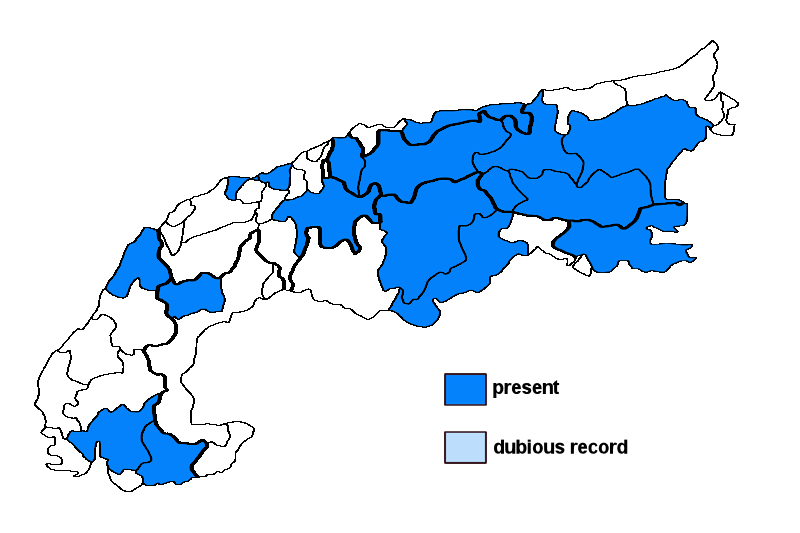Aspicilia simoensis Räsänen
Syn.: Lecanora bahusiensis H. Magn., Lecanora isidiata (H. Magn.) H. Magn., Lecanora simoensis (Räsänen) Zahlbr., Lecanora simoensis (Räsänen) Zahlbr. var. isidiata H. Magn., Sagedia simoensis (Räsänen) A. Nordin, Savić & Tibell
Lichenised.
Substrate: siliceous rocks, intermediate rocks (such as calciferous schists)
Altitudinal range: from the submediterranean/colline belt (potential vegetation: mixed deciduous forests dominated by Quercus and Carpinus) to the alpine belt (potential vegetation: treeless Alpine grasslands and tundras, to the lower limit of perennial snow and the equilibrium line of glaciers)
Note: a mostly sterile species with an areolate thallus reacting K+ red; based on a type from Finland and described as sorediate from the beginning; populations in the Alps have dense clusters of isidia later breaking down into soredia-like propagules (fitting Lecanora simoensis var. isidiata H. Magn.); most frequent on siliceous boulders visited by birds, widespread in the Alps.
Austria: Vorarlberg; Tirol; Salzburg; Kärnten; Steiermark; Germany: Oberbayern; Switzerland: Graubünden; Luzern; Schwyz; France: Alpes-de-Haute-Provence; Alpes-Maritimes; Haute-Savoie; Italy: Veneto; Trentino Alto Adige; Valle d'Aosta; Slovenia: Alpine and Pre-Alpine Slovenia;





